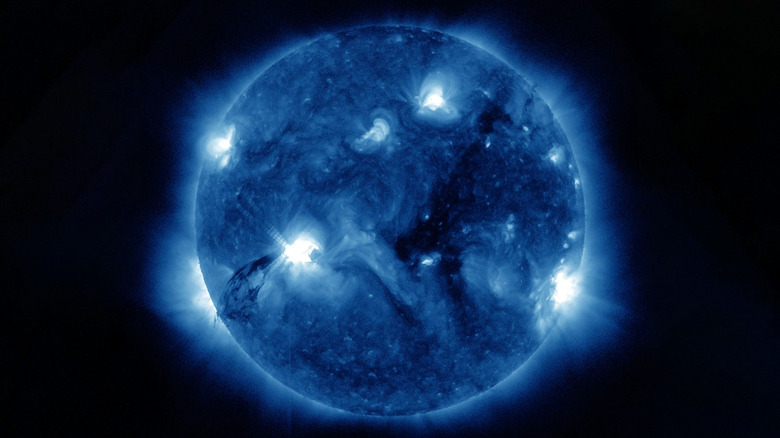
Some of the most populous objects in the universe are neutron stars. Neutron stars are the remaining stars that are left when the stars have become supernova. The only thing that is known to be denser than the neutron star is a black hole, which is formed in the same way. Depending on the mass of the Going Supernova star, the point will be a neutron star or black hole (through Smithsonian magazine).
Neutron stars may be small objects – they are usually around 12.5 miles – but they have many masses, which is why they are so dense. Recently, astronomers found the toughest neutron star so far, monsters weighing 2.35 times the mass of the sun (through W.M. Keck Observatory), even heavier than the previous record holder at 2.17 times the mass of the Sun. This is important because astronomers want to know the limits of how dense neutron stars before collapse and turn into black holes.
“We know about how the material behaves in nuclear density, as in the nucleus of uranium atoms,” said one researcher, Alex Filippenko of the University of California, Berkeley. “Neutron stars are like a giant nucleus, but when you have a sun mass one and a half of these items, which is around 500,000 mass of the earth from the nuclei all attached together, it is absolutely unclear how they will behave.”
Object, called PSR J0952-0607, also rotates 707 times per second, making it one of the fastest spinning neutron stars known. It was observed to use observatory kecks in research published in the journal The Astrophysical Journal Letters.
Black widow neutron star
This large neutron star has a Grizzly story, because it devoured material from a binary partner nearby. This is the type called the Neutron Star of the Black Widow, named according to the profit -profit that eats their friends. In the term astronomy, this object has tore his closest stars through gravitational strength and consuming its problems, feeding on it (through W.M. Keck Observatory).
The companion star in this system is now only 20 times the mass of Jupiter, which is very small according to the standard of the star, and its shape has been distorted by the mass of neutron stars nearby. This is also neatly locked to the neutron star, which means one side always faces it, and the temperature on this side is more than 10,000 degrees Fahrenheit. It’s hotter than our sun, which makes it possible to see dry stars through a telescope even though small.
Studying these black widow neutron stars that grow into a very large mass can help researchers learn about the boundaries where neutron stars turn into black holes. Researchers who are part of this series of latest findings have suggested that this new object is identified as close to that limit, and that they are likely to not find a more massive neutron star.
“We can continue to look for a black widow and similar neutron stars who have closer to the abyss of black holes,” Filippenko said. “But if we don’t find it, it tightens the argument that 2.3 The mass of the sun is the actual limit, outside they become black holes.”








